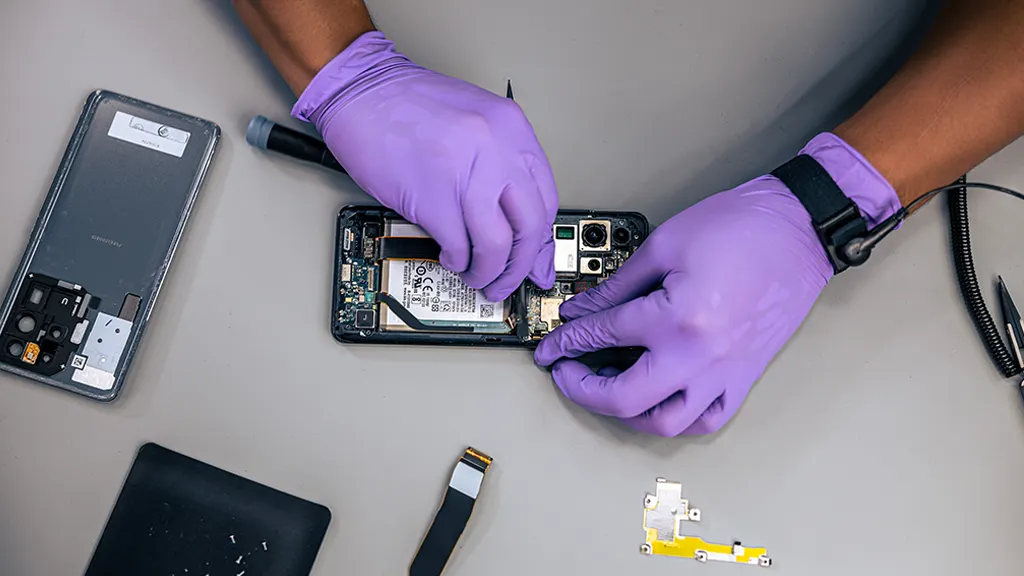In our hyper-connected world, the Samsung Screen Repair smartphone has become an extension of ourselves—a digital wallet, a communication hub, a camera, and an entertainment center all fused into a single, sleek slab of glass and metal. For Samsung users, this portal to the digital realm is often a vibrant, high-resolution AMOLED display, a marvel of modern engineering. But this very sophistication also presents a common point of failure: a cracked screen. The sickening crunch of glass meeting pavement is a uniquely modern heartbreak, instantly transforming a prized possession into a source of frustration. Navigating the subsequent journey of Samsung screen repair can be daunting, but understanding the options, costs, and processes can turn a stressful situation into a manageable one.
The Anatomy of a Cracked Screen: More Than Meets the Eye
First, it’s crucial to diagnose the damage accurately. Not all “cracked screens” are created equal, and the terminology matters for both repair options and cost.
- Cracked Glass (The Outer Layer): This is the most common type of damage. You can see and feel the spider-web cracks, but the display underneath still functions perfectly. Touch sensitivity remains intact, and the colors are as vibrant as ever. While it might seem like a purely cosmetic issue, a cracked outer layer compromises the screen’s structural integrity, making it more susceptible to further damage, and can expose the underlying components to moisture and dust.
- Shattered/Damaged Digitizer (The Touch Layer): The digitizer is the thin, transparent layer responsible for translating your taps and swipes into digital commands. If this is damaged, you may experience “dead zones” where touch doesn’t register, or the phone may behave erratically, ghost-touching on its own. This often occurs alongside a severely cracked glass layer.
- Damaged OLED/AMOLED Display (The Display Panel): This is the heart of the visual experience. Damage here manifests as black splotches, discolored lines, or a completely black screen, even if the phone is clearly on. In modern Samsung devices, the glass, digitizer, and display are often fused into a single unit, known as a “screen assembly” or “display assembly.”
Most contemporary Samsung flagships, like the Galaxy S and Z series, use this fused assembly. This means that even if only the glass is cracked, the entire unit—glass, digitizer, and display—must be replaced. This is the primary reason why screen repairs are so expensive; you’re not just paying for a piece of glass, but for the entire sophisticated display module.
The Crossroads: Choosing Your Repair Path
Once you’ve assessed the damage, you face a critical choice: where to get it fixed. Each path has its own set of trade-offs between cost, quality, and convenience.
1. Official Samsung Repair Channels: The Gold Standard for Quality
This includes Samsung-authorized service centers, uBreakiFix by Asurion locations, and mail-in repair services directly through Samsung’s website.
- Pros:
- Genuine Parts: You are guaranteed a factory-original Samsung screen, ensuring perfect color accuracy, brightness, and functionality.
- Expert Technicians: Trained professionals who know Samsung devices inside and out.
- Preserved Water Resistance: Many Samsung phones are IP68 rated for water and dust resistance. An authorized repair will properly reseal the device to restore this crucial protection, a step often missed in unofficial repairs.
- Warranty: The repair itself is backed by a warranty, giving you peace of mind.
- Cons:
- Cost: This is the most expensive option. For a flagship like the Galaxy S24 Ultra, a screen replacement can easily cost over $300.
- Time: Depending on location and part availability, it may take several hours or even days.
2. Third-Party Independent Repair Shops: The Balance of Cost and Convenience
These are the local phone repair stores found in most shopping centers.
- Pros:
- Affordability: Significantly cheaper than official repairs, often by a wide margin.
- Speed: Many offer “while-you-wait” service, completing the repair in under an hour.
- Convenience: Often no appointment is necessary.
- Cons:
- Part Quality: They may use lower-quality “aftermarket” or “refurbished” parts. Colors may not be as vibrant, brightness may be lower, and the glass may be more prone to scratches. Some shops may offer “OEM” (Original Equipment Manufacturer) parts, but their provenance can be uncertain.
- Loss of Features: Repairs on newer models can sometimes disable features like the in-display fingerprint scanner if not calibrated correctly with proprietary Samsung software.
- Voided Warranty: If your phone is still under manufacturer warranty, a third-party repair will void it.
- Compromised Sealing: The phone’s water resistance is almost certainly compromised.
3. The DIY Route: For the Brave and Technically Inclined
For the confident tinkerer, DIY repair kits are available online from vendors like iFixit.
- Pros:
- Lowest Cost: You only pay for the parts and tools.
- Satisfaction: The personal accomplishment of fixing it yourself.
- Cons:
- Extremely High Risk: Modern phones are incredibly complex. It’s very easy to damage internal components, such as the battery or motherboard, during the process. The adhesive used is very strong and requires heat and precision to remove without causing further damage.
- Time-Consuming: What takes a professional 30 minutes can take a novice several hours.
- Part Sourcing: Ensuring you get a high-quality part is a challenge in itself.
The Financial Lifeline: Samsung Care+ and Insurance
For those prone to accidents, investing in Samsung Care+ or a carrier insurance plan (like Verizon’s Total Mobile Protection or T-Mobile’s Protection<360>) is a wise decision. For a monthly or annual fee and a deductible that is far less than the cost of a full repair (often around $29-$99), you can get your screen fixed quickly and professionally through authorized channels. It transforms a major financial shock into a manageable expense.
Prevention is Better Than Cure: Protecting Your Investment
The best screen repair is the one you never need. A few proactive steps can save you a world of hassle and expense:
- A High-Quality Case: Don’t settle for a flimsy, free case. Invest in a reputable, protective case with a raised lip around the screen to prevent direct impact on a flat surface.
- A Tempered Glass Screen Protector: This is your first line of defense. It is a sacrificial layer designed to absorb impact and crack instead of your actual screen. They are inexpensive and easy to replace.
- Mindful Handling: Develop habits like not placing your phone on precarious edges, keeping it away from pets and children, and being especially vigilant when getting in and out of cars.
A cracked Samsung screen is an undeniable inconvenience, but it doesn’t have to be a catastrophe. By understanding the nature of the damage, carefully weighing the pros and cons of each repair option, and considering protective measures for the future, you can confidently restore your device to its former glory. Your digital portal can be mended, allowing you to once again enjoy the brilliant window to your world.

